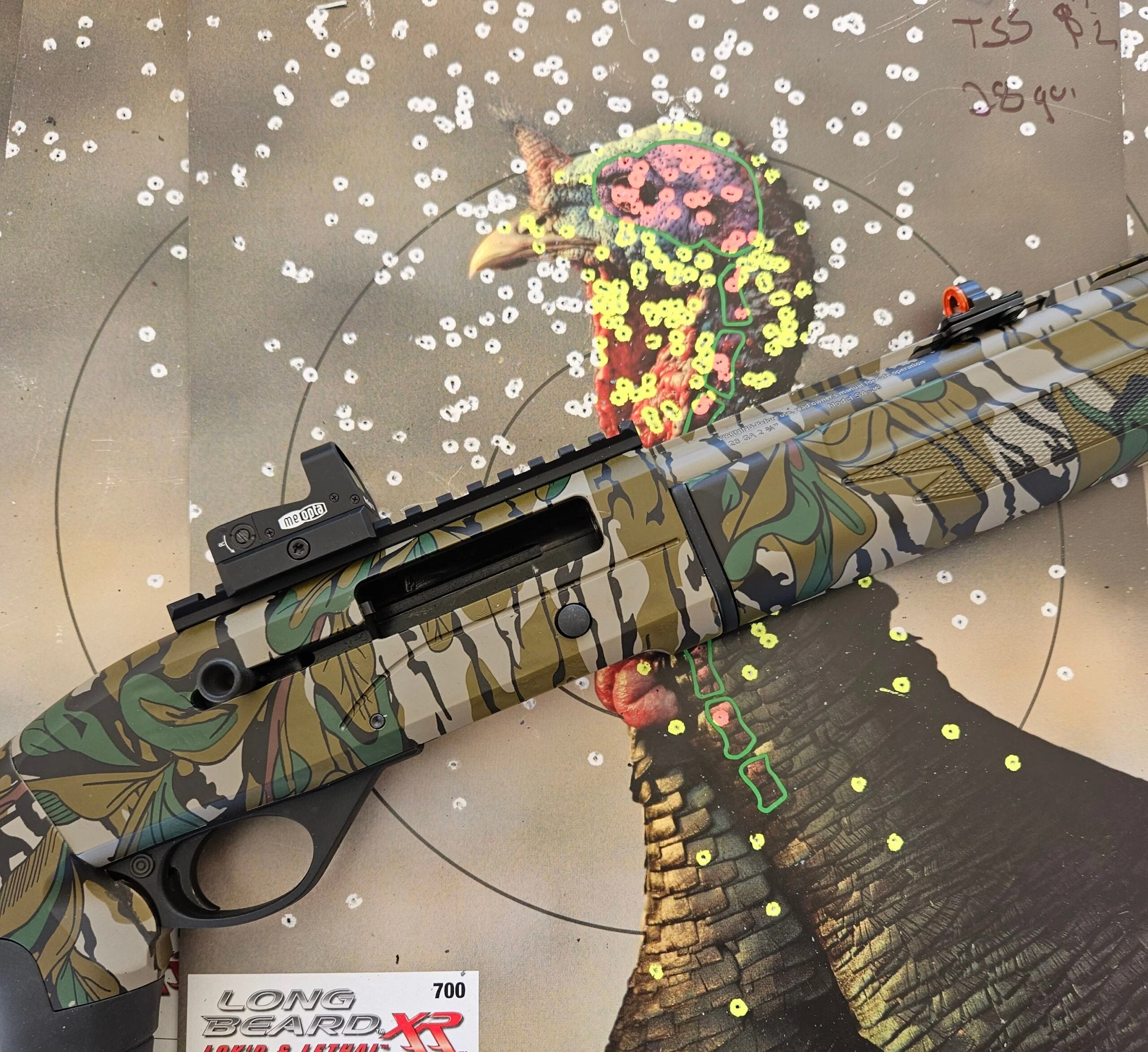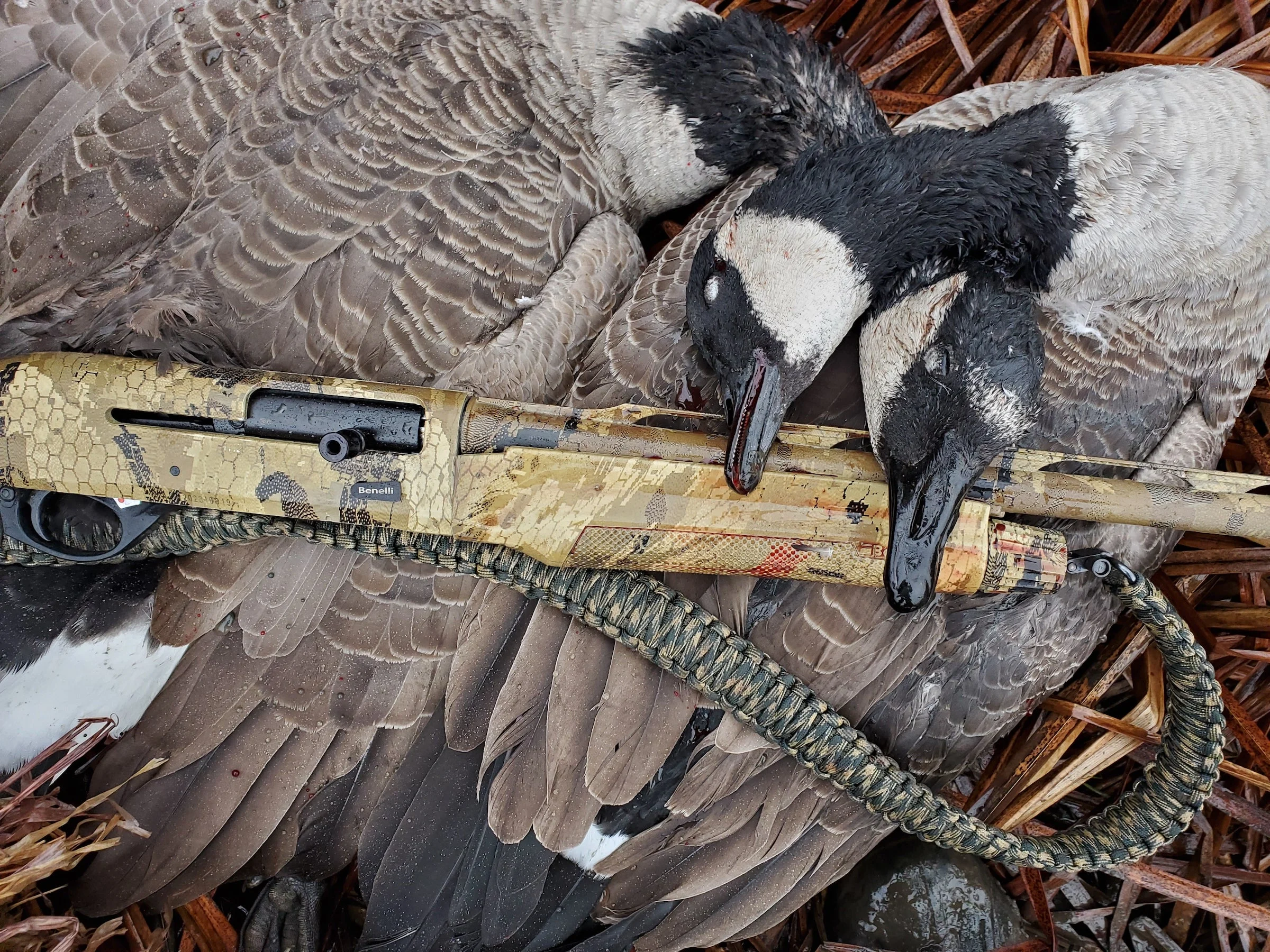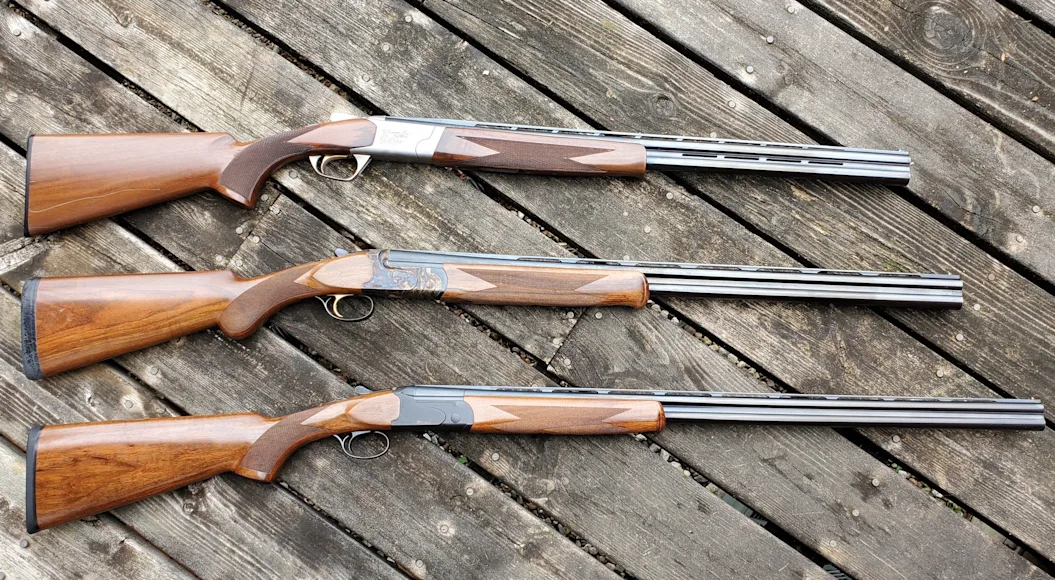We may earn revenue from the products available on this page and participate in affiliate programs. Learn more ›
American shooters have always liked smallbore guns. These days, they like them more than ever. New ammo choices and a new smallbore magnum cartridge let the 20- and 28-gauges expand their roles from upland and target guns to become turkey and waterfowl guns as well. If you’re in the market for a small-gauge gun there are a few factors to consider when you choose between the 28 gauge vs 20 gauge.
28 Gauge vs 20 Gauge: Table of Contents
28 Gauge vs 20 Gauge Bores and loads
Gun Weights and Frames
28 Gauge vs 20 Gauge for Different Kinds of Bird Hunting
The 28-gauge myth (and the new 20-gauge myth)
Final Thoughts on the 28 gauge vs 20-gauge
28 Gauge vs 20 Gauge Bores and Loads
A 20-gauge has a bore diameter of .615 vs the 28-gauge’s .550, and that .065 difference in diameter means the 20-gauge holds more shot than a 28-gauge can carry.
Most 20-gauges have three-inch chambers that allow them to shoot up to 1¼ ounces or more of lead shot or HeviXII shot, 1 1/8 ounces of bismuth, or an ounce of steel. Very dense TSS pellets allow payloads of an ounce and a half or a little more in a 3-inch 20-gauge.
Until recently, all 28-gauges had 2 3/4-inch chambers, and most still do. A standard 28 load is ¾ of an ounce of lead, ⅝ of an ounce of steel, or ¾ of an ounce of bismuth, although heavier lead loads of ⅞ and even a full ounce have been sold for the 28. The 2¾-inch hull contains 1⅜ ounces of TSS.

TSS makes the 28 gauge an effective turkey load. Phil Bourjaily
The new 3-inch 28-gauge is currently available in guns from Beretta, Benelli, and Franchi. The extra capacity of the 3-inch hull allows the 28-gauge to shoot loads including a full ounce of HeviShot HeviXII or 1 1/16-ounces of Boss bismuth.
As more guns are made for 3-inch 28-gauge, ammo choices will no doubt expand, too. However, even with the 28-gauge cartridge stretched to 3 inches, the skinny hulls don’t match the 20-gauge for shot capacity.
Gun Weights and Frames
Small gauges are popular because they are lightweight and pleasant to carry and handle. In general, 20 gauges weigh between 6 and 7 pounds, sometimes less, while 28s range between 5¼ pounds up to 6½ or more. There is overlap in weight between them, especially because many 28-gauges are built on 20-gauge frames, which makes them not much lighter than a 20.
A 28-gauge on a true 28-gauge frame is much slimmer and lighter than the average 20-gauge, and it makes a great carrying gun. A 28 on a 20-gauge frame is not a bad thing if you use it for target or dove shooting where a little more weight and bulk absorb recoil and help you swing the gun.
Either gun, built on a frame made of alloy instead of steel, can weigh around five pounds, which makes them joys to carry, if verging on too light to shoot well.
28 Gauge vs 20 Gauge for Different Kinds of Bird Hunting
Upland Hunting
Traditionally, the 20- and 28-gauges have been upland guns, and they still shine in the woods and fields. Where lead shot is legal, a 20-gauge is enough gun for any upland bird, with the possible exception of wild-flushing pheasants. I have shot a 20-gauge and bismuth shot at wild roosters for the last several seasons, and rarely feel the need for a bigger gun. To be fair, I pass up longer chances, especially at going-away birds, and I shoot the majority of my pheasants over a point.
As for the 28-gauge, it, too, can be loaded up with 7/8- or 1-ounce loads (or even high-quality ¾-ounce lead loads) and used effectively for any type of bird over a pointing dog or close-working flusher. It is most at home, though, in the woods where grouse and woodcock are its natural prey. It’s a great gun in the dove field, too, as is the 20. I shoot a 28-gauge at doves—most of them over decoys. With 5/8-ounce steel 7s my 28 is very effective, even when I have to reach a bit.
Waterfowling
Twenty gauges, and now 3-inch 28s, are the “in” gun among waterfowlers today. Even I, a committed 12-gauge duck and goose shooter, enjoyed the season I spent shooting a 20-gauge Benelli M2 for waterfowl. It was light and easy to tote on my shoulder, and, loaded with 1 ounce of bismuth 3 shot, it was totally adequate for decoying ducks and geese, if a little light to swing smoothly on longer chances. You can now find 1¼-ounce loads of HeviXII for the 20, and those denser-than-lead pellets give it as much range as most shooters can make use of. I would not be afraid to hunt late-season Canadas with it so long as they were at least halfway willing to work.

The author has been using this 20-gauge Benelli M2 for waterfowl. Phil Bourjaily
With HeviXII or bismuth, the 3-inch 28-gauge should be a capable gun in the duck blind, too. You need to keep your shots within the limitations of the ammunition, and within the range at which you can shoot a very light 28-gauge well. People get tired of hearing me say this, but it’s true: heavier guns are easier to shoot, swing, and even shoot fast than lighter guns. A lot of people will be taking 28-gauges to the marsh in the coming seasons, but popularity won’t change the fact that it’s a shorter-range, more challenging gun to shoot than a 20-gauge, which is a shorter-range, more challenging gun to shoot than a 12-gauge.
Turkey Hunting
The advent of very dense Tungsten Super Shot (TSS) turned the .410 into a 40-yard turkey gun, starting a bonafide turkey hunting fad a few years ago. Anything the .410 can do, the 28- and 20-gauges can do better. TSS turns them both into legitimate turkey guns. I hunted in Texas with Mossberg’s SA-28 28-gauge semiauto this spring. At well under six pounds, the gun weighs nothing on your shoulder, and I wouldn’t be afraid to shoot a 40-yard turkey with it. The 20-gauge can handle up to 1⅝ ounces of TSS, rendering it even more capable at longer ranges. If you don’t want to spend the money for TSS, you can shoot Winchester Long Beard, which is good almost to 40 yards in a 20-gauge. With the 28, you’ll want to shoot TSS or you’ll have to get your birds very close if you’re sticking with lead.
The 28-gauge myth (and the new 20-gauge myth)
The myth persists that the 28 defies the laws of ballistics and hits harder than it should. On the one hand, I know this is not true, as I’ve had a chance to pattern 28s and watch high-speed video of the shot with engineers at the Federal ammunition plant. There is no magic there. On the other hand, the 28-gauge I’ve been shooting at doves for the past two years has proven more effective than I ever thought it would be. The 28-gauge’s magic, such as it is, lies inside the shooter. If you like your 28, and if you enjoy shooting a light, soft-kicking gun, you’re likely to shoot it well.
Meanwhile, a myth is building around the 20-gauge. That myth is, the 20-gauge is equal to, or the replacement for, the 12-gauge. It is if you want to compare apples to oranges, or, more accurately, TSS, bismuth or HeviXII in a 20-gauge to steel or lead turkey loads in a 12-gauge. In that case, yes, the 20 is the ballistic equal of the 12. Guess what? They make bismuth, TSS, and HeviShot in 12-gauge, too, and when you compare the 20- and 12-gauges on an apples-to-apples basis, the 12-takes all the marbles.

Twenty-eight gauges are a favorite of quail hunters. Phil Bourjaily
Final Thoughts on the 28 gauge vs 20 gauge
With the new ammunition available for the 20- and the 28-gauge, choosing between the two smallbores is harder than it used to be. The 28-gauge, even powered up with a 3-inch chamber, is still a gun for short and medium-range use. Also, as a practical matter, 28-gauge ammunition costs dollars per box more than 20-gauge ammo. That’s a real factor in the 20’s favor, especially if you plan to spend the summer practicing at skeet and sporting clays. If you plan to shoot your 28 a lot, it actually makes sense to reload.
Where the margins on 12- and 20-gauge reload savings are slim, you’ll save quite a bit loading for the 28. You could use a 28 for all your smallbore shooting and many do. I would advise with the 28-gauge, (and with the 20), to buy the longest barrels you can. That little bit of extra weight out front makes light guns easier to shoot. While Gene Hill, one of my legendary Field & Stream predecessors, called the 28-gauge “the thinking man’s 20-gauge,” I believe it’s more useful to think of the 28 as what the .410 should have been, rather than as a competitor or replacement for the 20-gauge.
Read Next: 28 Gauge vs 410: Which is the Better Sub-Gauge for Turkey Hunting
The 20 remains a more versatile choice than the 28. The 20-gauge with an ounce of steel is capable for decoying waterfowl, and with HeviXII, it’s beyond capable. You can shoot Winchester Long Beard lead from your 20-gauge turkey gun, too, if you don’t want to pay $10 per shell for TSS. And, you can find some 20s that are as light as the lightest 28-gauge, if you want a gun to carry forever. A 20-gauge is more versatile than a 28, almost as light, and it costs less to shoot.
While I seem to be leaning towards the 20 Gauge here, and I guess I am, I also enjoy shooting my 28, and so the only reasonable answer to the question of 28 gauge vs 20 gauge is, to buy one of each.


